Pelagic Rookie
By Michael Stevens
I have been birding fairly seriously for the last two years and found myself tempted to try a pelagic trip, an offshore boat tour meant to discover ocean-going birds. When I saw that Alvaro Jaramillo, Bay Area birder extraordinaire, was organizing a series of Covid-sensitive pelagic outings this past summer I took the plunge and signed up. Thus I found myself on the dock at Half Moon Bay one calm morning this August. The other birders were a serious lot, carrying serious-looking cameras, and decked out in serious cold-weather field gear.
I had an unserious camera, wore a hoodie over a sweatshirt, and was the only pelagic rookie in the bunch. Off we went.
We traveled slowly though the harbor, a riot of friendly species – hundreds of terns, pelicans, and cormorants plus the occasional Common Murre hinting at the exotica to come. I was concerned that the task of sorting out the birds we encountered offshore would be complicated, but it turned out to be simplicity itself: they all looked like gulls and there was no way in hell I could even begin to identify them.
It was a good day for pelagic birding with lots of gull-like birds to stare at confusedly, but gradually, I noticed one species that seemed a bit larger than the others. With my keen eye I noticed these specimens wore white on the front of the face – you know, the part that’s right where that big hooked bill connects. And voilà – I could recognize a pelagic species, Black-footed Albatross. With that building block, the rest of the pelagic taxonomy quickly fell into… well, no; it didn’t help at all, but hey! I saw an Albatross!
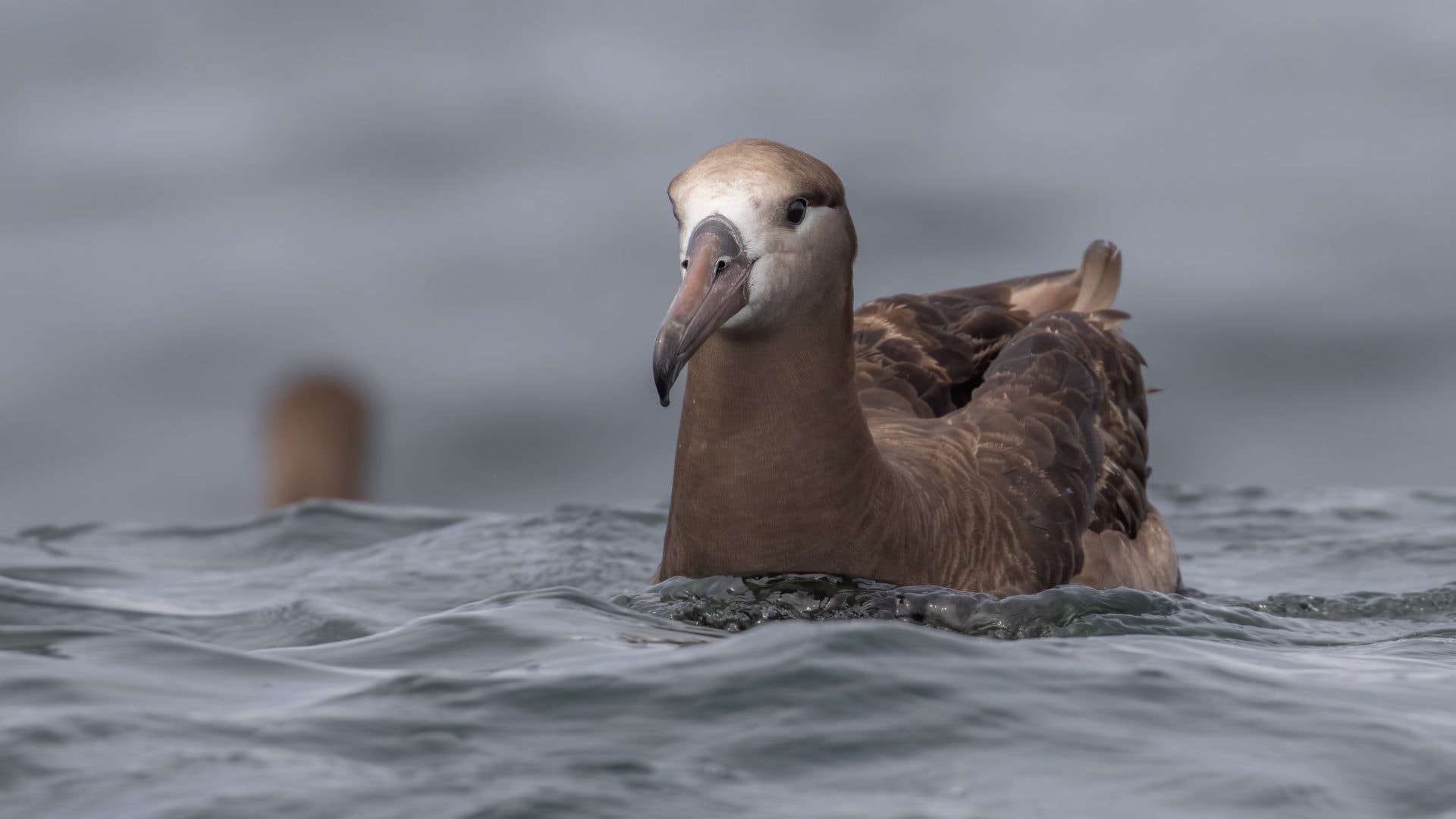 Black-footed Albatross by Eric Ellingson
Black-footed Albatross by Eric Ellingson
And then there’s the photography thing.
My keys to a good bird photo are to be very close to a subject that’s standing still. When you’re bouncing around on the ocean, this turns out to be difficult. My picture roll ended up with a lot of views of empty ocean and a lot of views of small black dots on otherwise empty ocean. And one good picture of – what else? – a gull. But Sabine’s Gull, a pelagic species with a very distinctive wing pattern. So, that’s 2!
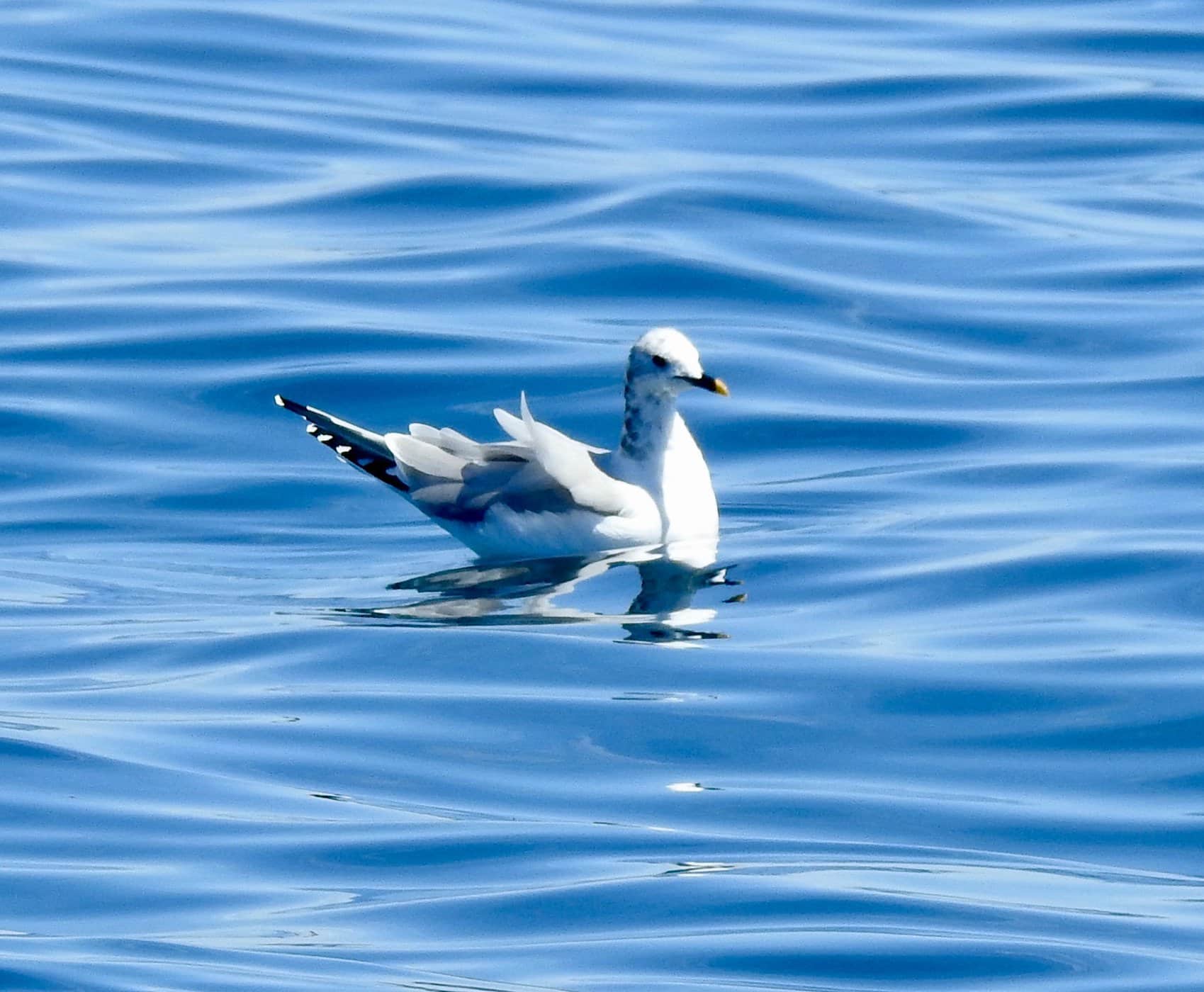 Sabine’s Gull by Michael Stevens
Sabine’s Gull by Michael Stevens
When things settled down in the afternoon, one of the spotters who accompany Alvaro on these trips, the superb birder Malia DeFelice, took things in hand and made sure I had seen a Pink-footed Shearwater and knew that the little ones were Storm-Petrels.…

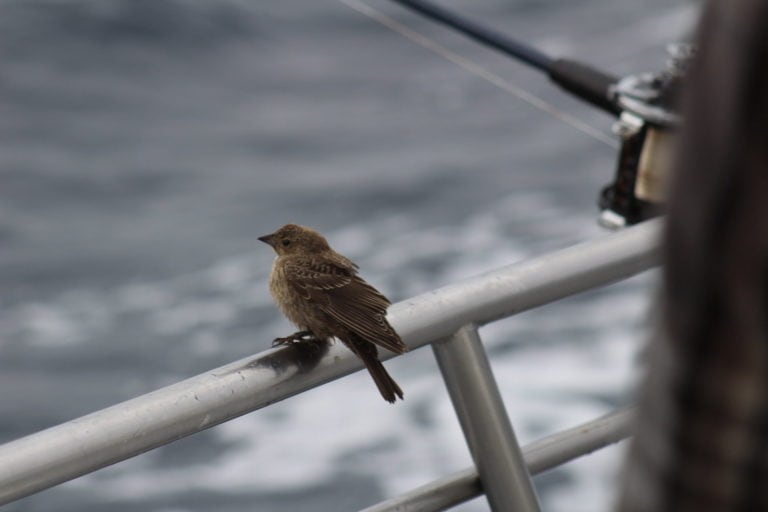
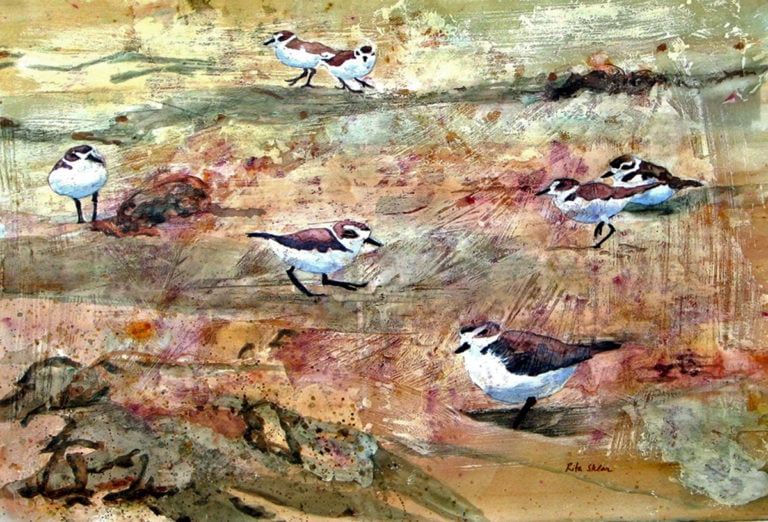
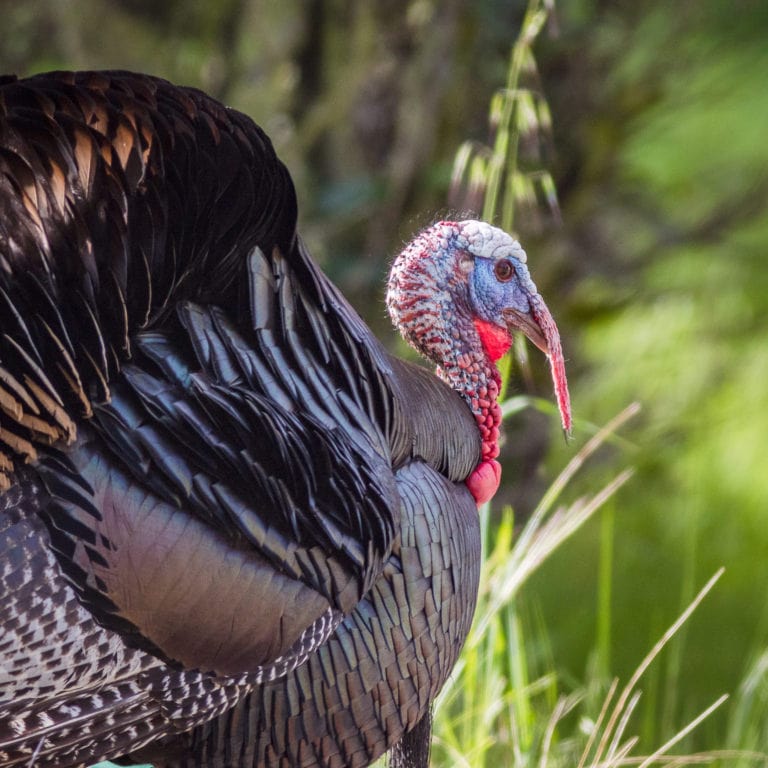
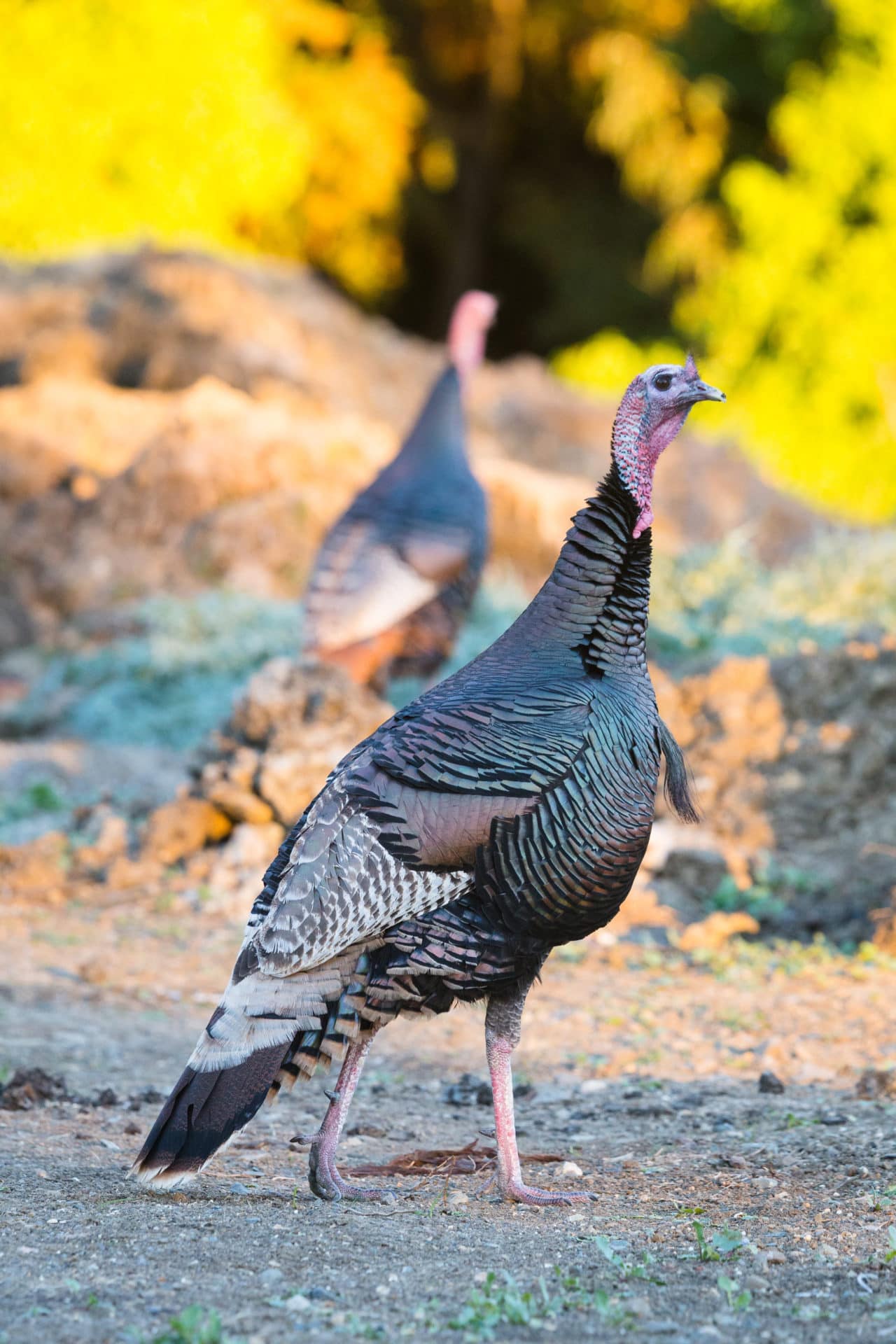 Wild turkeys, El Cerrito by Alan Krakauer
Wild turkeys, El Cerrito by Alan Krakauer
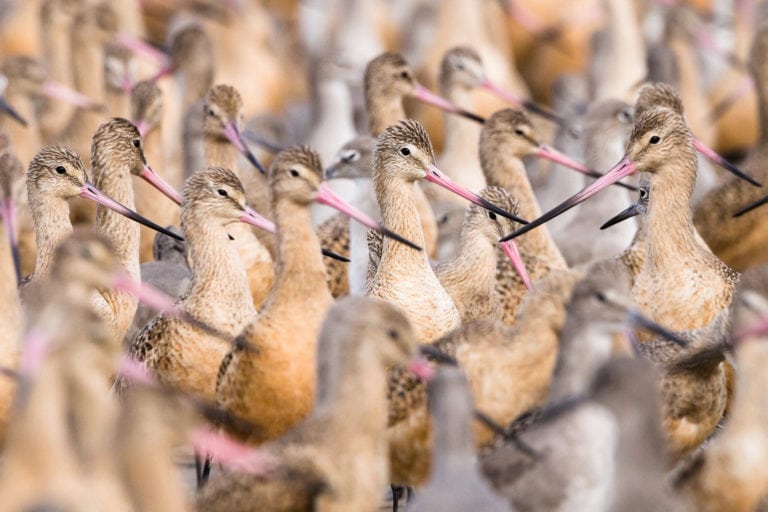
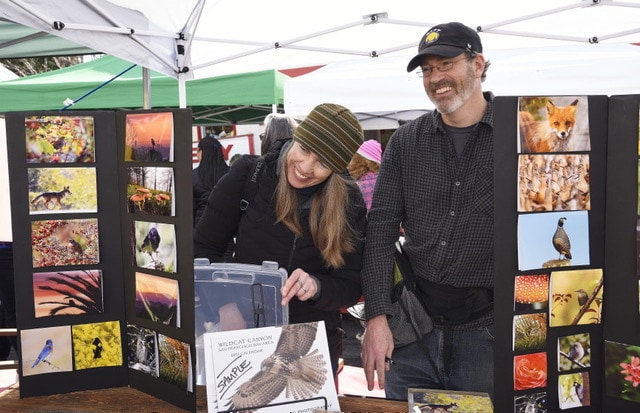 Alan Krakauer and Lauri La Pointe at the Kensington Farmers Market. Photo Credit: G. Kitamata
Alan Krakauer and Lauri La Pointe at the Kensington Farmers Market. Photo Credit: G. Kitamata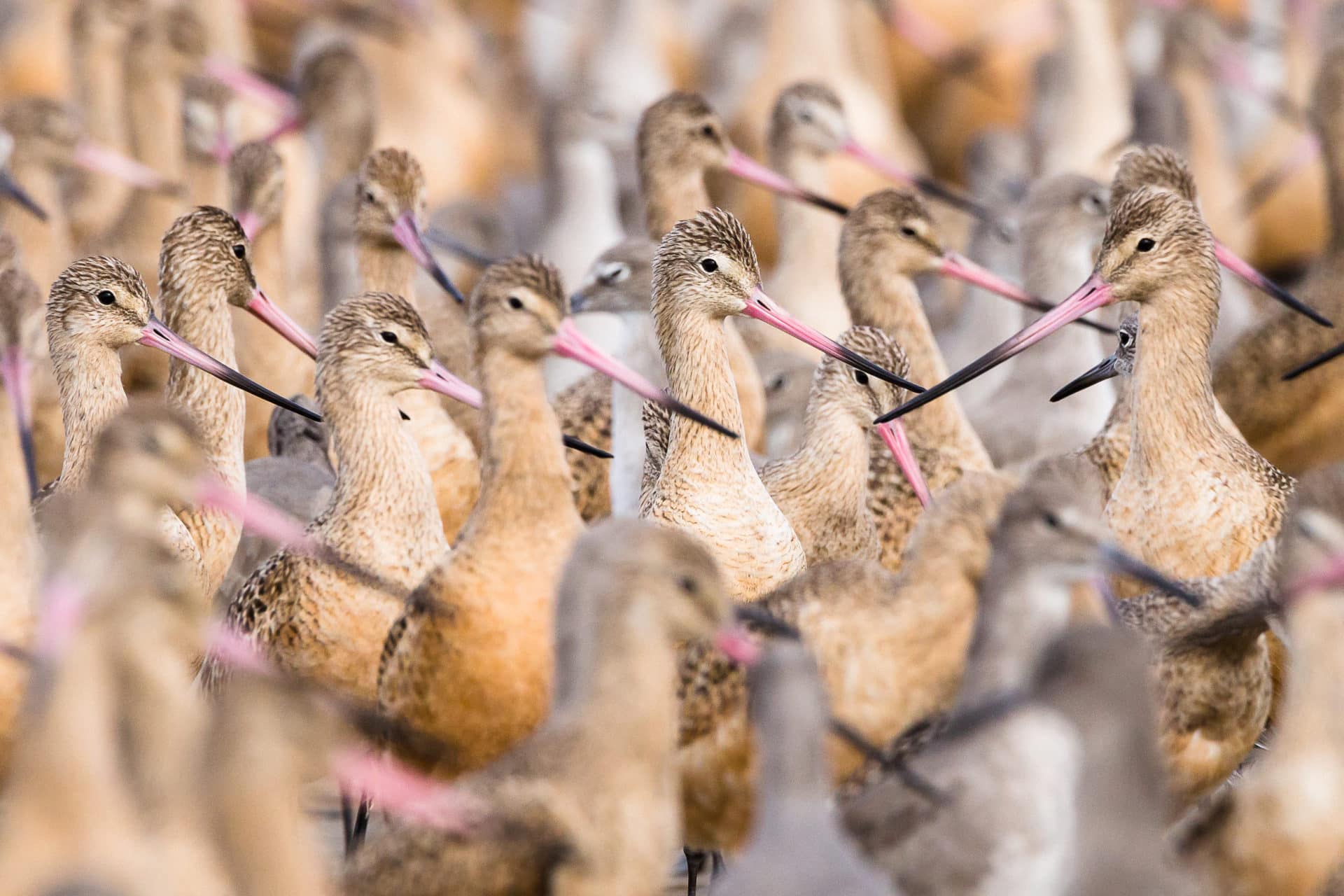 Godwits against the grain by Alan Krakauer
Godwits against the grain by Alan Krakauer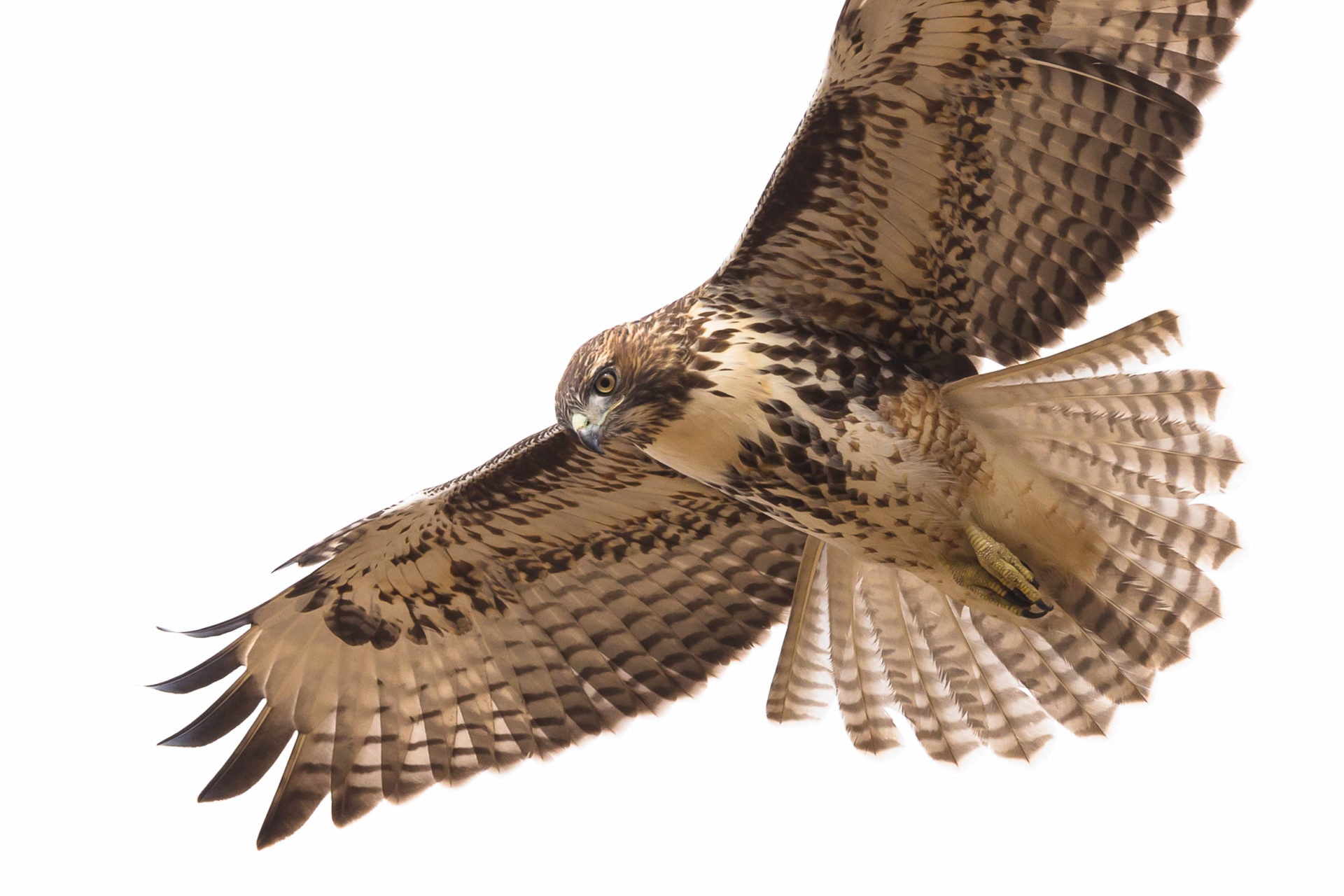 Close encounter with a Red-tailed Hawk by Alan Krakauer
Close encounter with a Red-tailed Hawk by Alan Krakauer
 Portrait of Clay by Bay Nature Magazine.
Portrait of Clay by Bay Nature Magazine.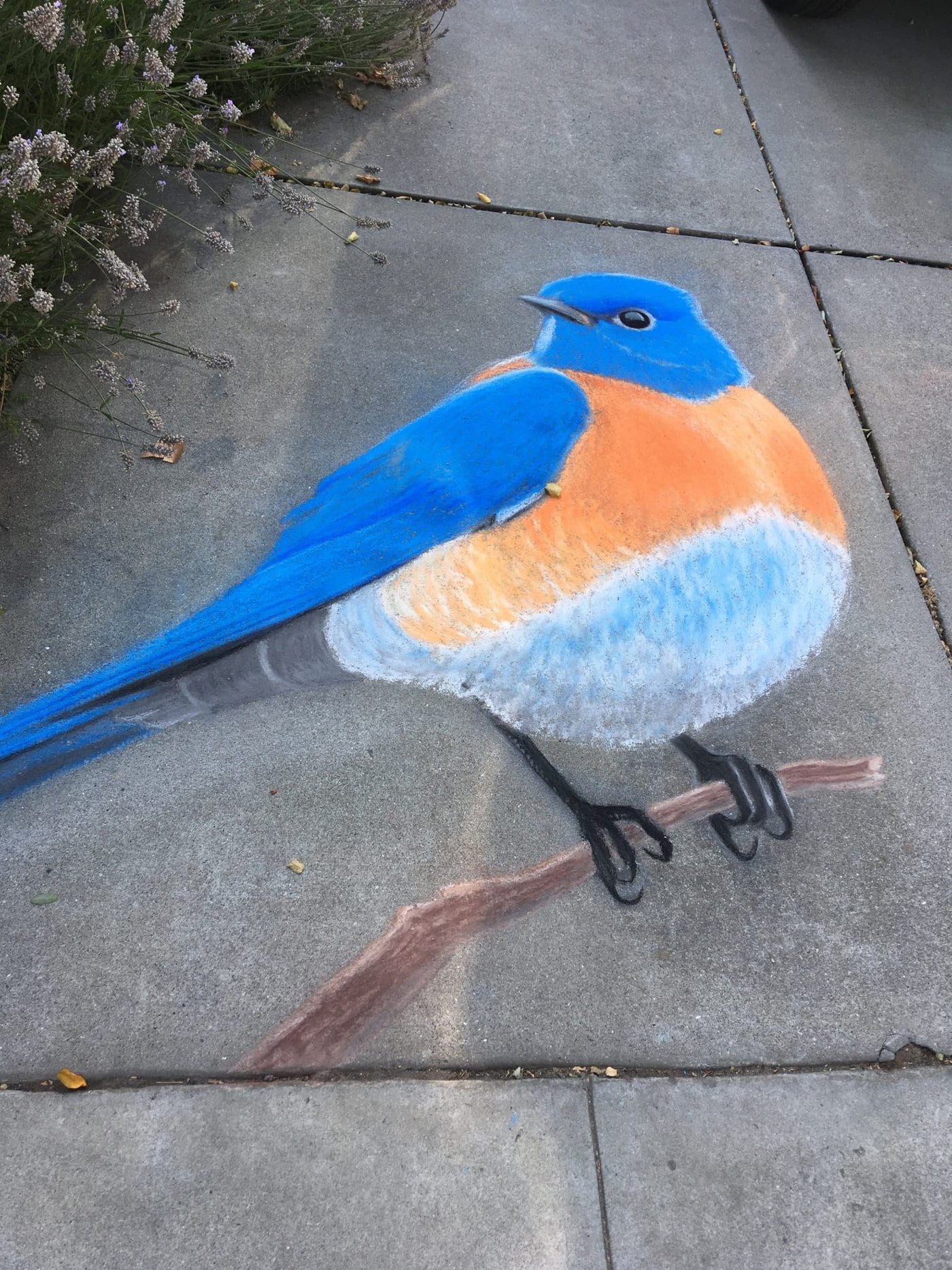 Westy, the Western Bluebird. One of Clay’s most recent creations for Linda Carloni, a GGBA board member and former board president. Photo by Anna Carloni.
Westy, the Western Bluebird. One of Clay’s most recent creations for Linda Carloni, a GGBA board member and former board president. Photo by Anna Carloni.